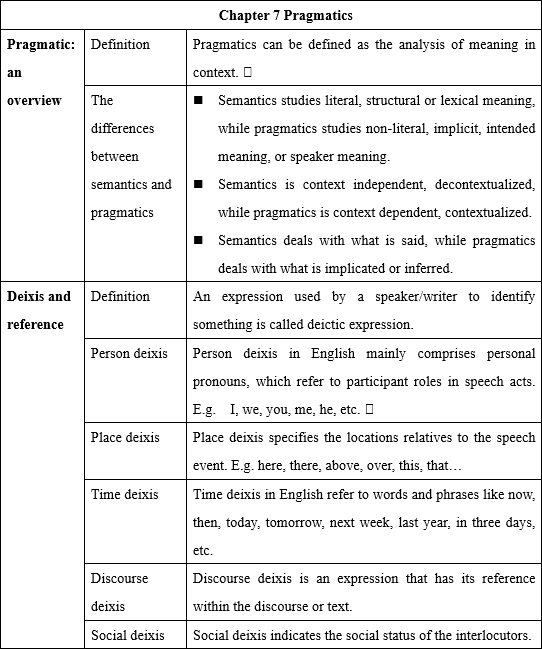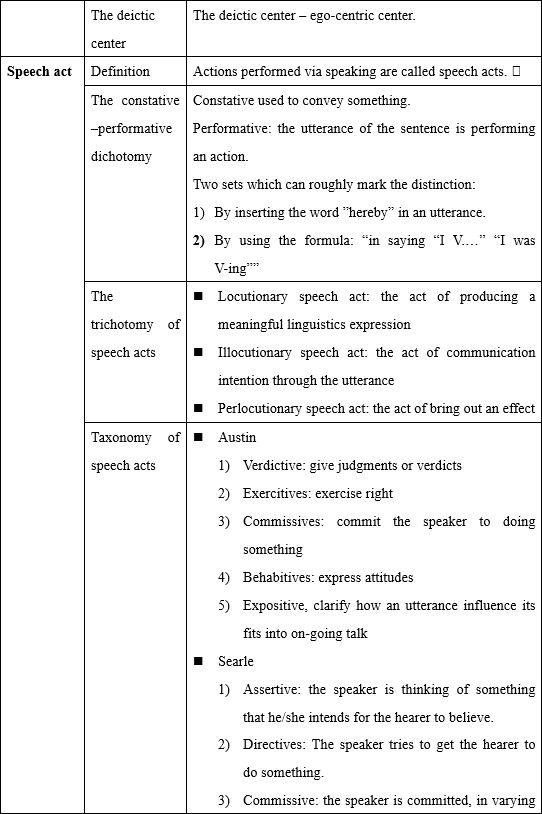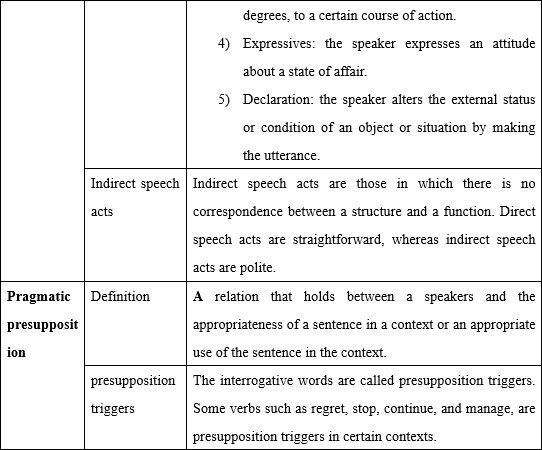课前准备:
预习第七章,结合自己实际情况,标记出比较难理解的地方。
教师导引:结合学生词汇与汉语修辞—比喻的学习经历,让学生试着谈论自己对相关术语的理解。
小贴士:是否在自身语言的学习过程中,思考过本章的某些内容?通过本章内容的阅读,自己对语义关系和修辞有了哪些新的认识?
小试牛刀
What are the differences between the two linguistic studies of meaning – semantics and pragmatics?
参考答案:
(1) Semantics studies literal, structural or lexical meaning, while pragmatics studies non-literal, implicit, intended meaning, or speaker meaning.
(2) Semantics is context independent, decontextualized, while pragmatics is context dependent, contextualized.
(3) Semantics deals with what is said, while pragmatics deals with what is implicated or inferred.
学习目标
重点
The definition of pragmatics
Deixis, types of deixis
Anaphora and cataphora
Direct speech and indirect speech
Direct and indirect illocutions
难点
Speech act theory
The distinction between semantics and pragmatics
知识结构




